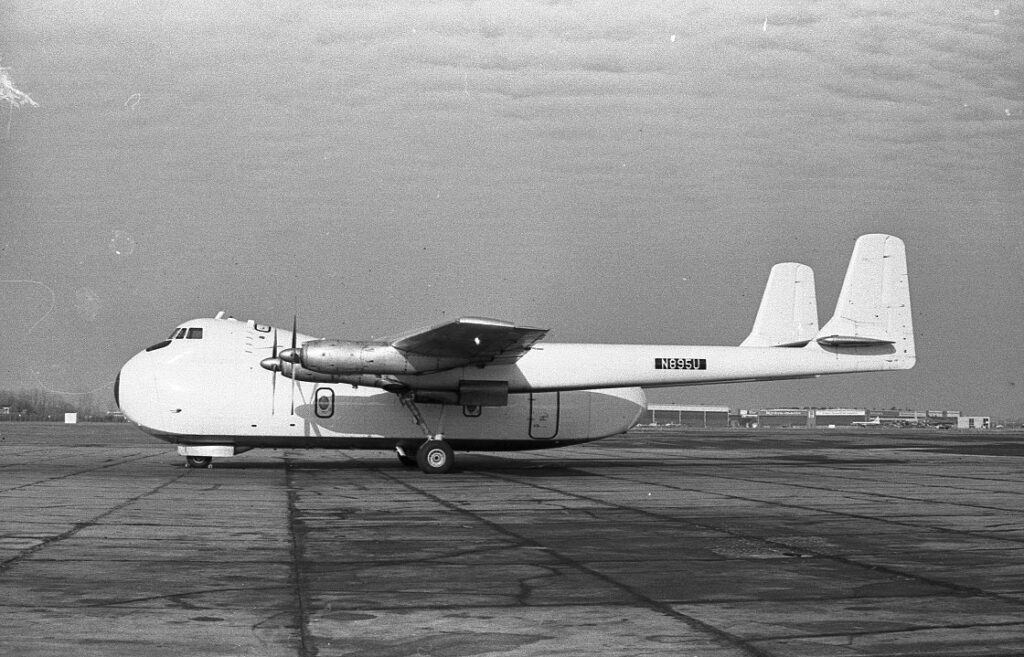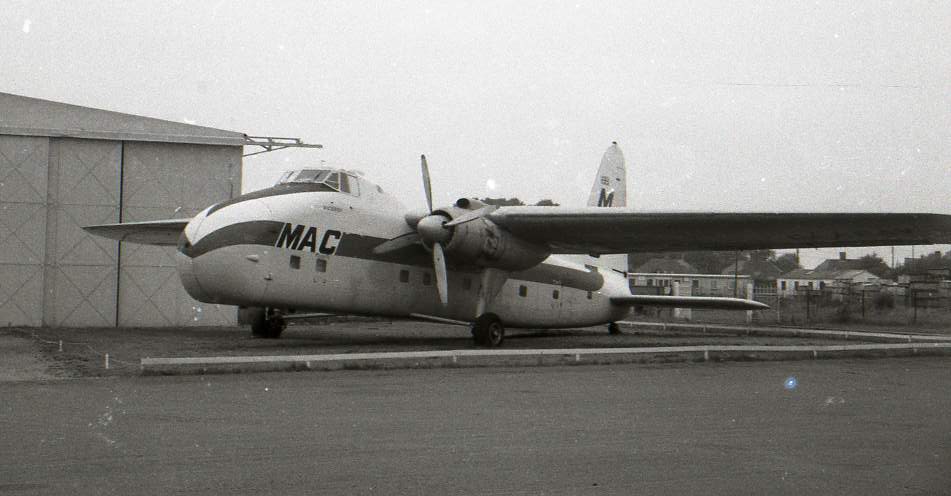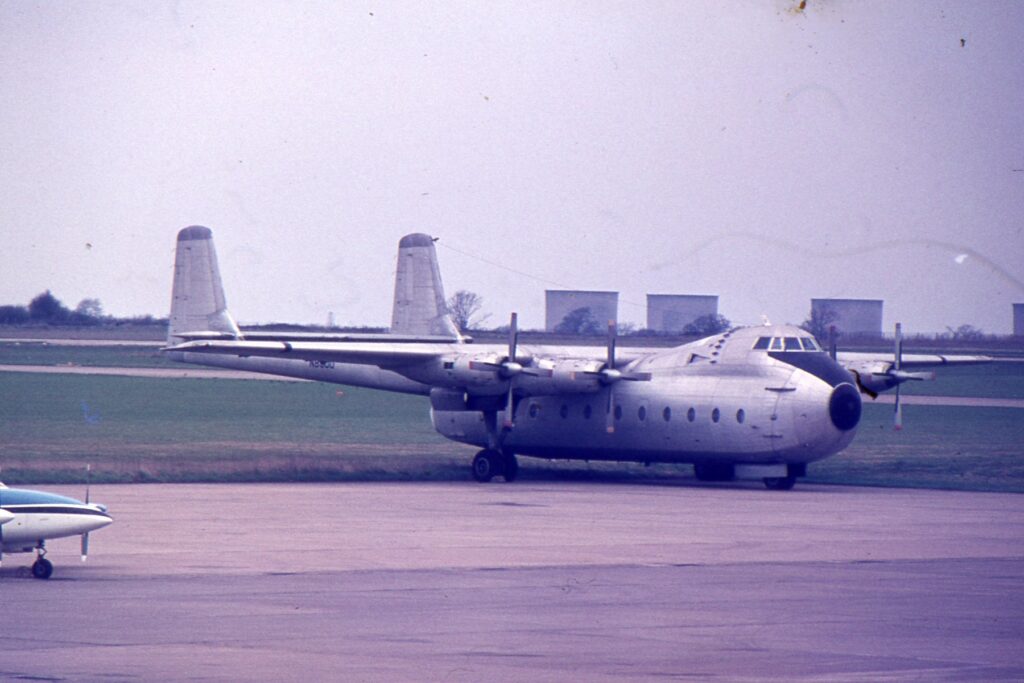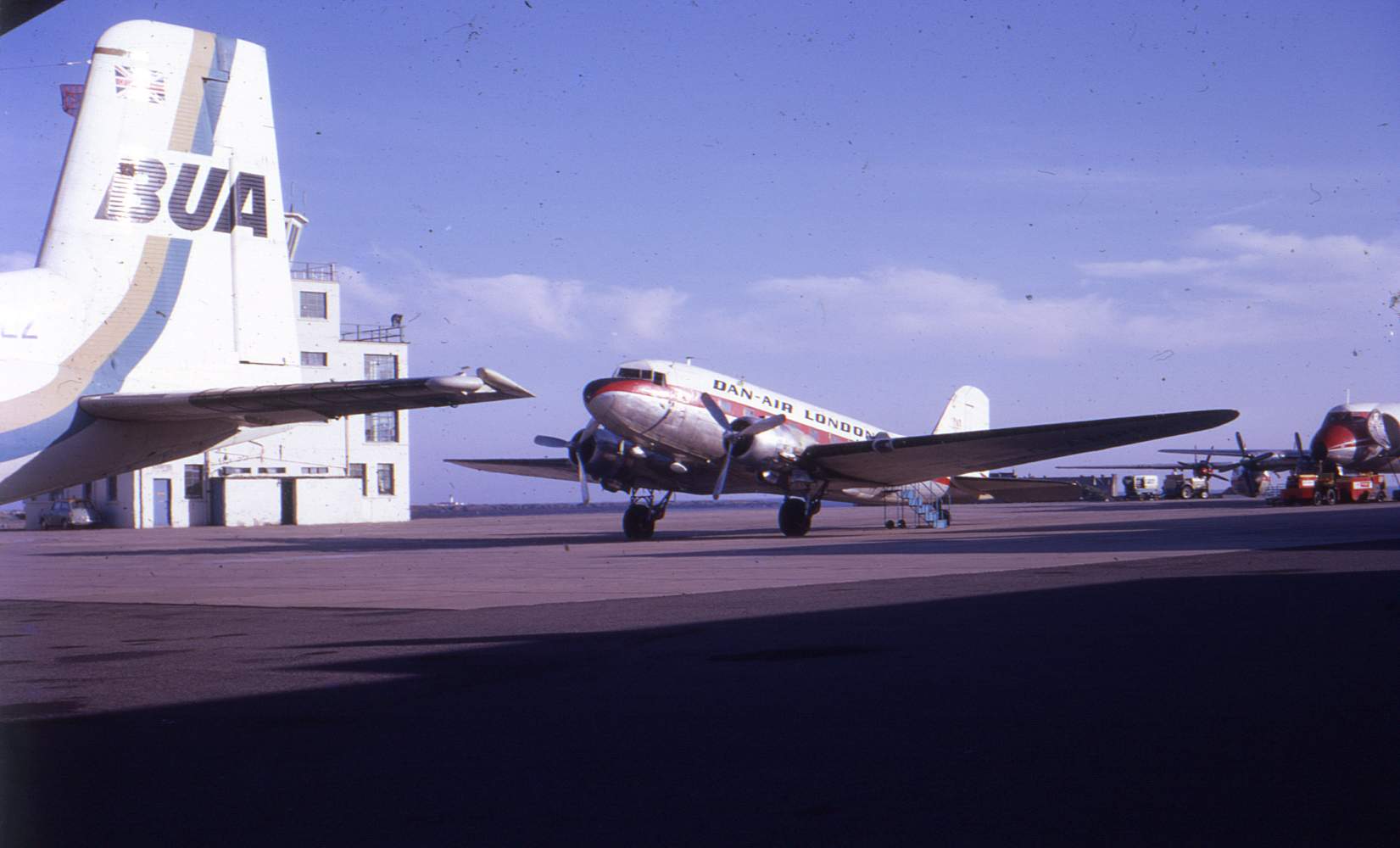
Stephen Quinto had noted the expansion of courier flights in the USA and the early signs of ‘just-in-time’ manufacturing in the motor industry which demanded the fast distribution of components. In Europe, Caterpillar was one industry giant which was an early pioneer of centralised parts distribution from their huge major warehouse at Grimbergen in Belgium. The ‘Hub and Spoke’ system recommended itself to Quinto and 1971 license applications to the Air Transport Licensing Board specified two hubs at Heathrow and East Midlands with initial spoke services to Lille and Beauvais. This placed Sagittair in direct competition with Skyways Cargo Airlines and their road/ air freight services from Manchester/ Birmingham/ London via Lympne/ Ashford Airport to Beauvais and Antwerp.
Indeed, Quinto’s license applications listed DC-3s and DC-6s in addition to the Beech 18s (which would, surely, have been of little commercial appeal). The Lille application, however, listed Armstrong Whitworth Argosies which represented a sea change in scale and cost for the ambitious airline. The new venture remained solely aviation-based and was therefore unable to offer the road/ air/ groupage economies which made Skyways attractive to car manufacturers. The Lympne-based company offered air freight speeds of documentation and customs clearance at its three airports even if shippers chose the ‘economy mode’ and sent their freight across the channel as groupage on board trucks.

A move to turboprop operations was made once the ATLB had granted Sagittair a freight license to Lille and their first AW650 Argosy was delivered to East Midlands on April 8th 1971. G-APRN had first flown in 1959 and had served with BEA for a number of years. After a spell in storage, she had crossed the Atlantic to fly with Universal Airlines as N897U in November 1968. Following her brief stay in the USA, N897U returned to Europe to fly, probably on lease from Hawker Siddeley, for Nittler Air Transport in Luxembourg (1). Reverting to registration G-APRN, the Argosy was overhauled by Field Aircraft Services at Castle Donington and test flown in May 1971. A second ex-Universal Argosy arrived on August 29th 1971, inbound from Keflavik. N893U had not previously appeared on the UK-register so, following overhaul by Fields, she was registered G-AZHN on 25th October 1971. The first Argosy flights from Heathrow with G-APRN commenced in September 1971 but these were mainly stand-alone charters and the Company’s operational base had become East Midlands/ Castle Donington. The Heathrow to Lille schedule was inaugurated by G-AZHN on November 9th and was flown on Tuesdays and Fridays. The payload of the Argosy opened-up new avenues of business while the expense of operating the large aircraft demanded new customers. Universal’s operation in the USA had been from Detroit’s Willow Run Airport and motor part distribution was considered a key ambition for Sagittair. The carriage of high value goods which benefited from the security of air transport saw the airline operating a number of services between Southend and Belfast between November 1971 and January 1972 carrying cigarettes for packing. G-AZHN flew the route on 10th, 13th, 14th, 16th, 17th, 21st and 29th December while G-APRN was involved on 16th, 22nd and 31st December 1971 and daily on 3rd to 6th January 1972. Sagittair’s newspaper route to Geneva had ended in September 1971 following objections by Swissair and the two Beech 18s were laid-up and advertised for sale by Shackleton Aviation for 34,000 pounds.
Similarly, the airline was looking at the carriage of perishable goods, flowers and fruit, from the Channel Islands to East Midlands. A joint venture was started with Brittany’s Rousseau Aviation and flights between Coventry and the Channel Islands started in December 1971. Consumer goods were carried on the outbound flight and perishable goods on the return. In between the regular tasks, the airline flew ad hoc freight charters with G-APRN, for example, carrying an 8 ton load from Southend to Madrid on 23rd December 1971.
(1) Nittler were primarily a road transport concern. They had distinguished themselves previously by operating the ex-Luxavia Lockheed L-1649A Starliner LX-LGY. This aircraft was re-registered N4796 and may have flown only one mission for Nittler – a flight in August 1969 from Luxembourg to Tel Aviv bearing the registration TF-ERA. By 28th October 1969, the Starliner had been sold to Larry Raab, an American pilot who flew with Hank Warton’s operation in Biafra. Registered HP-501, the aircraft operated several arms flights between Portugal and Sao Tome but, apparently, only flew into Uli airstrip once. Source: ww.aviotecho.net and Michael Draper’s book ‘Shadows’.

The flow of fresh fruit, vegetables and flowers increased during the spring and Sagittair’s Argosies were sometimes supplemented by Midland Air Cargo’s veteran Bristol Superfreighters, usually flying from Coventry.
The huge access doors of the Argosy also made it attractive for oversized freight and various charters were operated to destinations as far afield as Cairo, Bergen and Bilbao. The arrival of the large freighters and the loss of the Geneva newspaper contract had made the Beech 18s irrelevant to the Sagittair operation and, in late 1971, they were offered for sale for 34,000 pounds.
Two further ex-Universal Argosies were acquired with N892U arriving at the start of January 1972 and N895U on February 28th. Both were rolled into Field’s hangar for maintenance and the former re-emerged as G-APWW in March 1972. It commenced Channel Island fruit and flower flights and also picked-up some of Sagittair’s previous speciality, newspaper flights. The airline was having some cash flow problems and, in May, they suffered the indignity of having an Argosy impounded at East Midlands. While the writ had been served on behalf of Midland Air Cargo, who were owed money for their Superfreighter flights, they weren’t the only dissatisfied creditor and Field’s halted work on the overhaul of N895U. The fourth Argosy was towed out of Field’s hangar and was never to operate for Sagittair.
The Channel Island flights continued to develop and further cigarette flights to Belfast were negotiated for July but the poor financial status of the airline was evident and, on July 28th 1972, operations were halted. Three days later, an Official Receiver was appointed to try to salvage assets. The UK was in the grip of a national dock strike so it was critical that the aircraft were kept operating. An agreement was reached with Field’s and maintenance facilities were restored enabling the resumption of operations on August 3rd. Top priority for both Sagittair and Midland Air Cargo were flights to Guernsey to uplift the island’s tomato crop which was in danger of rotting in the fields due to the dock strike. The Argosy fleet was mostly detached to Bournemouth Airport to ensure that the maximum number of rotations could be made between the Channel Islands and the mainland. Some charters were also operated between East Midlands and Rotterdam during August but the end of the dock strike brought an end to the temporary spell of lucrative business. The outstanding debts remained and, on September 4th, G-APWW flew the airline’s final revenue-earning charter carrying an aero engine from Filton to Melun in France. G-APWW returne to the UK the following day and, on September 8th, Sagittair ceased operations. Hawker Siddeley Aviation repossessed G-APRN and G-AZHN and flew them to their Bitteswell airfield on September 25th.
Footnote: Argosy crews termed the twin-boomed beauty the ‘whistling wheelbarrow’. The RAF, alluding to the nose-mounted electronics pod, had a ruder version which still referenced the ‘whistle’ of the four Dart engines. My only experience of flying in the Argosy was a 6 hour trip in the RAF’s XP448 from RAF Cottesmore in 1973. The flight took us way south to the Scilly Islands on a mission checking airfield approach systems. A glass panel in the nose offered fantastic views of the turquoise waters around the coast of the south-west.
THE AFTERMATH:
The relationship between Stephen Quinto and the airline’s creditors continued to be acrimonious after the brief truce that the Official Receiver had managed to negotiate with Field Aircraft Services. Eventually, Field’s acquired the rump of the airline for a mere two thousand pounds and set-about starting their own airline. In 1973, Field Aircraft Services were part of the Hunting transport/ industrial conglomerate and the main group decided to establish a freight airline division. Hunting was no newcomer to aviation having owned Hunting Clan Air Transport before its incorporation into British United Airways. They also had the famous air survey company Hunting Services in their portfolio. Hunting/ Field’s experience and sound financial background enabled the new company to establish itself in a way that Sagittair had been unable to do. The transition from cheaper, older piston-engined freighters to capital-intensive turboprop aircraft had proved too demanding for Sagittair and they were not alone: Kestrel Airways and the Emerald Airways group had both failed to successfully upgrade from Dakotas to Viscounts and even the very experienced Skyways Cargo Airline had a problem moving on from Dakotas to turboprop FH227s. Midland Air Cargo had been in direct competition with Sagittair, especially for oversized loads, perishable goods flights to the Channel Islands and motor part distribution. Flying from both Coventry and East Midlands, the superannuated Bristol Freighters would have been cheap to purchase and offered a good payload. Their limited range and maintenance costs would have been compromising factors but twin piston engines should still offer cheaper costs than four turboprop units. Despite having relatively lean times, the 1972 dock strike and the disappearance of Sagittair encouraged Midland to attempt to emulate the newly-founded Air Bridge Carriers with the purchase of four Argosy 220s from Transair-Midwest in Canada. The four aircraft were all ex-BEA and had, initially, appeared ideal for the Canadian operator’s support of the mining industry in Manitoba and the Northwest Territories. However, the Argosies appeared unsuitable for the cold weather operations and Transair agred to a half million pound package for the sale of them to Midland. They were due to be delivered in stages from late 1972 until early 1974 but Midland’s financial status couldn’t support the deal and the four aircraft were eventually sold to new owners in Gabon and Ireland before finally ending-up in Australia and New Zealand. On April 6th 1973, Midland Air Cargo followed Sagittair into receivership.

Hits: 281

